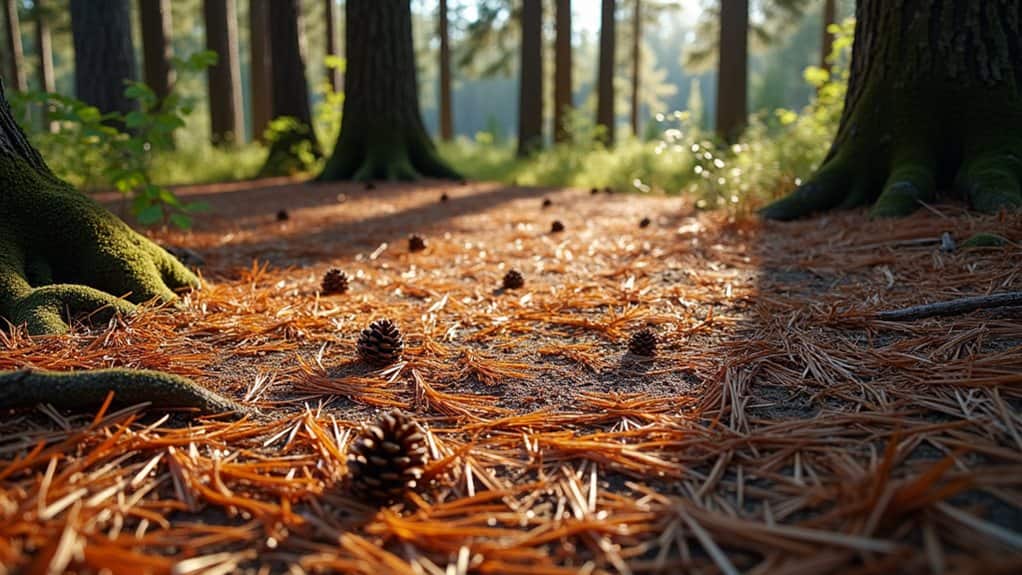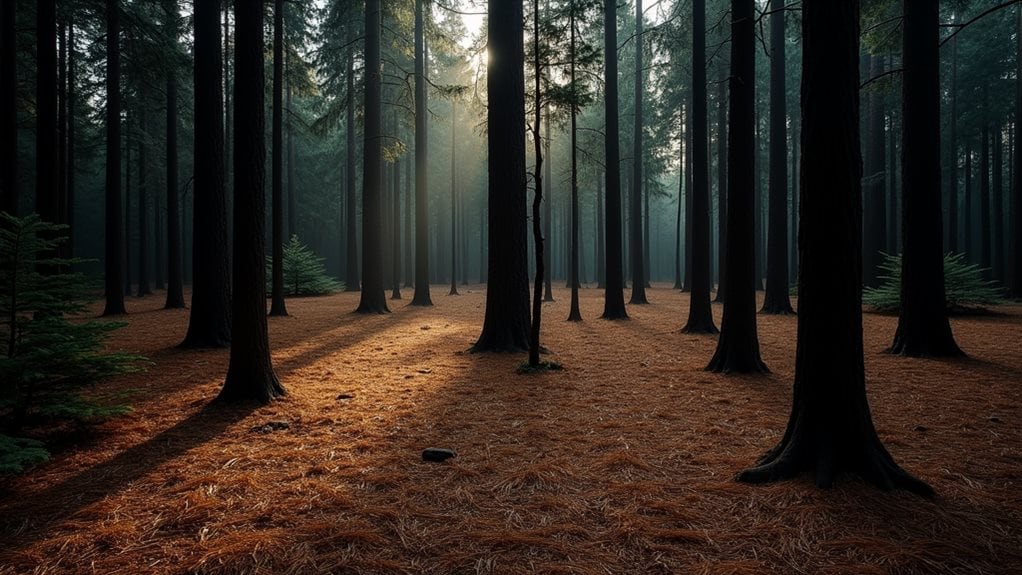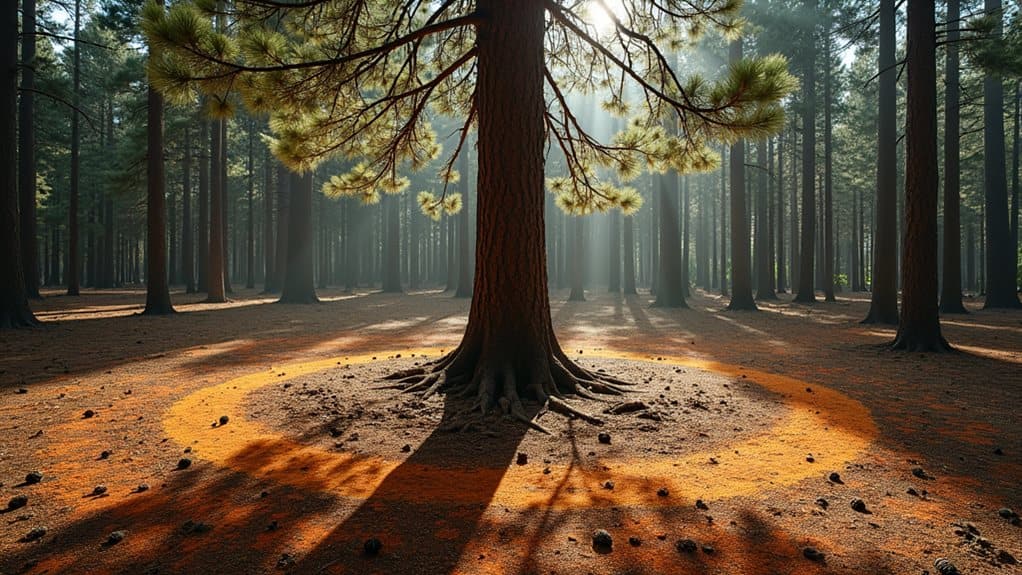Why Does Nothing Grow Under Pine Trees?
You've probably noticed the bare ground beneath pine trees in your neighborhood or local parks, wondering why these areas seem to resist plant growth. It's not just your imagination – pine trees create one of nature's most challenging environments for other plants to survive. While you might assume it's simply due to shade, there's actually a fascinating combination of biological and chemical factors at work. From the carpet of acidic needles to the fierce competition for resources, pine trees employ multiple strategies that effectively create their own "no-grow" zones. Let's investigate the clever ways these evergreen giants maintain their solitary domains.
TLDR
- Dense pine canopies block most sunlight from reaching the forest floor, making it difficult for understory plants to photosynthesize.
- Pine needles contain compounds that inhibit plant growth and slow decomposition due to high lignin content.
- Pine trees create intense competition for water and nutrients in the soil, limiting resources available for other plants.
- Pine needles form a thick mat on the ground that can physically prevent seeds from reaching soil and establishing roots.
- Only shade-tolerant plants specially adapted to low light conditions, like ferns and bleeding hearts, can thrive under pines.
The Science Behind Pine Needles

Pine needles are far more complex than their simple appearance suggests.
When you look closely, you'll find they're packed with fascinating compounds like α-terpineol, linalool, and limonene, which give pine trees their wonderful scent. Additionally, the nutrient retention properties of pine needles can hinder the growth of certain plants, limiting their access to essential nutrients.
These tiny green needles are nature's chemical factories, producing essential oils that act as natural antibiotics and antioxidants, while their high lignin content makes them incredibly durable and slow to decompose. Recent studies have shown these essential oils demonstrate strong antimicrobial effects against various food-borne microorganisms.
Competition for Natural Resources
A fierce battle rages beneath the pine forest canopy, where trees engage in constant competition for essential resources.
You'll find these towering pines locked in an intense struggle for water, nutrients, and precious space in the soil. This competition can lead to soil compaction as roots expand and vie for limited nutrients.
When you're hiking through a dense pine forest, you're actually witnessing nature's survival game, where only the strongest saplings win by outcompeting their neighbors for limited resources.
Research shows that pines growing in intraspecific competition groups actually develop larger trunk diameters than solitary trees.
Light and Growth Issues

The dense canopy of mature pine trees creates one of nature's most challenging environments for plant growth. You'll notice how those thick layers of pine needles work like a massive umbrella, blocking most sunlight from reaching the forest floor. This lack of adequate red light prevents many plants from thriving, as they rely on it for energy production and growth. When you're hiking under these giants, you'll find that only specially adapted plants, like bleeding hearts and lady ferns, can tough it out in these deeply shaded conditions. Early spring daffodils grow well beneath pine trees, offering a burst of color before the canopy becomes too dense.
Soil Chemistry Under Pines
Many gardeners blame pine trees for creating acidic soil, but science tells a different story.
While it's true that pine needles themselves are acidic, they won't greatly change your soil's pH when they decompose. Soil pH imbalance can actually inhibit grass growth and encourage moss proliferation, leading to the misconception that pine trees are solely to blame.
What's really interesting is that the bedrock beneath your garden has a much bigger impact on soil pH than those pine trees do – even if you've got a whole forest of them!
Soil testing is essential to accurately determine if your soil is truly acidic or not.
Managing Pine Tree Areas

Successfully managing pine tree areas comes down to careful planning and precise execution.
If you're looking to maintain healthy pine growth, you'll want to focus on proper spacing – planting trees six feet apart in rows and eight feet between rows – while ensuring you've eliminated competing vegetation. Soil testing can help determine if lime amendments are needed to balance soil acidity issues. Additionally, understanding the characteristics of topsoil can further aid in enhancing the growth potential in these areas.
Don't forget to consult forestry professionals who can help you achieve the ideal tree density of 500-800 seedlings per acre.
Overall
You've now learned why those pine trees in your backyard create such a challenging environment for other plants! Whether it's the acidic pine needles covering the ground, the fierce competition for resources, or the dense shade from above, it's no wonder that other plants struggle to survive. Next time you're camping or hiking near pine trees, you'll understand exactly why that forest floor looks so bare, and you'll appreciate nature's fascinating survival strategies even more.







